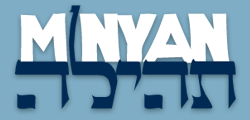|
|
Our MissionMinyan Tehillah's mission is to create a spiritually uplifting tefillah (prayer service) grounded in a commitment to halachah (Jewish law) and to maximize the participation of both women and men. We are a vibrant, friendly community of families, couples, singles, students, professionals and more, and we welcome people of all backgrounds, observances, ages, and orientations.
|

